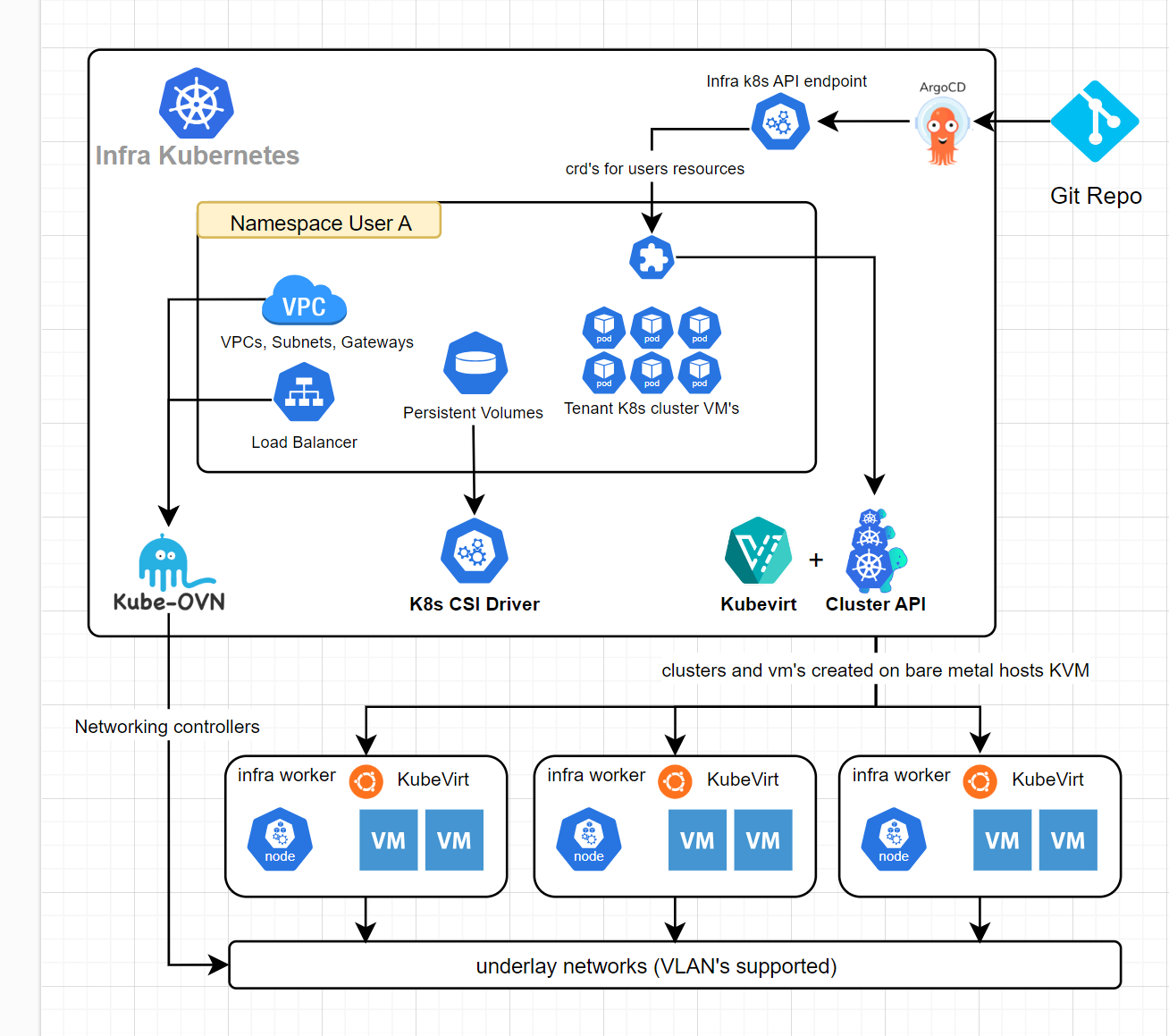Overall Architecture ¶
Kube-DC provides a comprehensive multi-tenant cloud infrastructure platform built on Kubernetes and enhanced with enterprise-grade features like virtualization, networking, and identity management.
Core Components ¶
The Kube-DC architecture consists of several key components that work together to deliver a complete cloud platform:

Architectural Layers ¶
Kube-DC is organized into main architectural layers:
graph TD
K8s[Kubernetes] --> KubeVirt[KubeVirt]
K8s --> KubeOVN[Kube-OVN]
K8s --> Keycloak[Keycloak]
K8s --> LBController[Kube-DC LB Controller]
K8s --> MultiTenant[Multi-Tenant Controller]
KubeVirt -->|Provides| VMs[Virtual Machines]
KubeOVN -->|Manages| Networking[Network VLANs/VPCs]
Keycloak -->|Controls| IAM[Identity & Access]
LBController -->|Enables| LoadBalancing[Load Balancing, Floating IPs]
MultiTenant -->|Organizes| Resources[Organization and Projects]Infrastructure Layer
- Bare metal servers or cloud infrastructure
- Kubernetes core services
- Storage subsystems
Virtualization Layer
- KubeVirt for VM provisioning and management
- Container workloads
- Hybrid application support
Networking Layer
- Kube-OVN for software-defined networking
- Multi-tenant network isolation
- External IP addressing and service exposure
Management Layer
- Multi-tenancy resource organization
- Identity and access management via Keycloak
- User interface and API access
Multi-Tenant Organization ¶
Kube-DC introduces a hierarchical resource organization model:
- Organizations - Top-level entities representing companies or teams
- Projects - Logical groupings of resources within an organization
- Groups - Collections of users with defined roles and permissions
This multi-tenant structure maps to Kubernetes and Keycloak components to provide isolation and access control. For detailed information on the multi-tenancy architecture, see the Multi-Tenancy & RBAC documentation.
Network Architecture ¶
Kube-DC leverages Kube-OVN to provide advanced networking capabilities:
- Virtual Private Clouds (VPCs) for network isolation
- External and Floating IPs for service exposure
- Load balancing and service routing
For detailed information on the networking architecture, see the Networking (Kube-OVN, VLANs) documentation.
Virtualization Architecture ¶
Kube-DC integrates KubeVirt to enable VM workloads alongside containers:
- VM lifecycle management through Kubernetes APIs
- Hardware passthrough capabilities
- Mixed container and VM environments
For detailed information on the virtualization architecture, see the Virtualization (KubeVirt) documentation.
Key Benefits ¶
- Multi-tenant isolation: Secure separation between organizations and projects
- Unified management: Single platform for VMs and containers
- Network flexibility: Advanced SDN capabilities with Kube-OVN
- Enterprise security: Integrated identity management with Keycloak
- API-driven architecture: Consistent interfaces for automation and integration